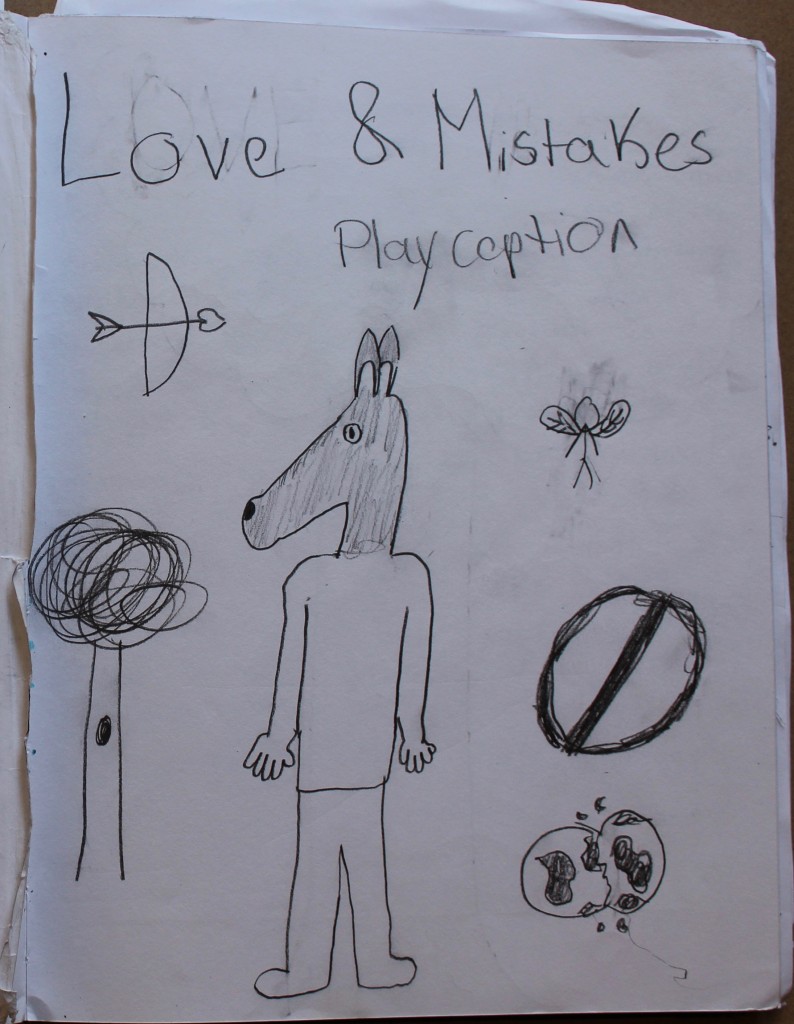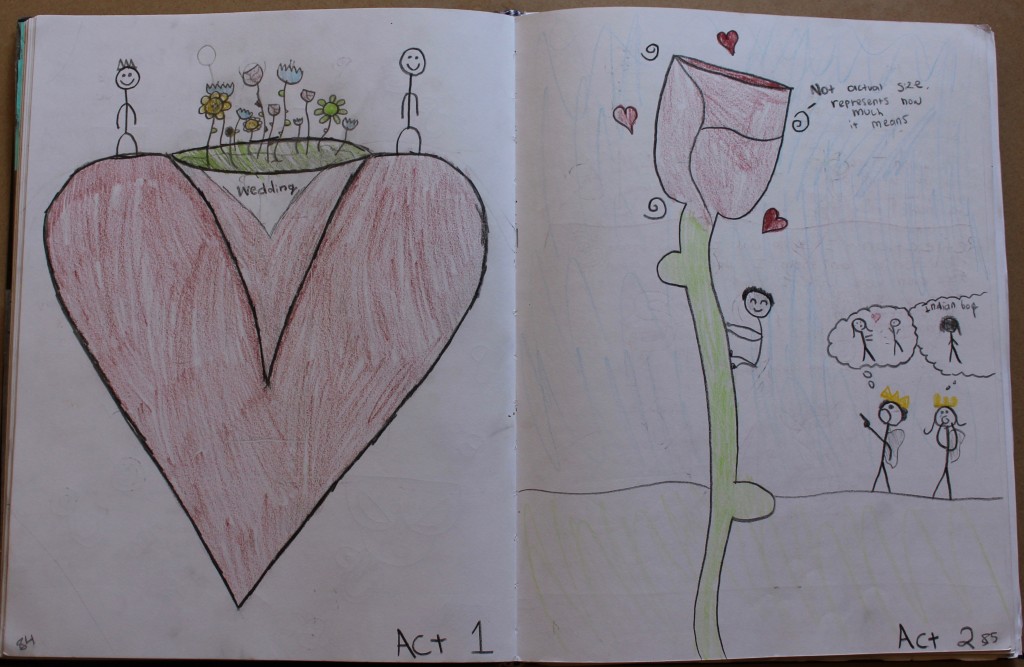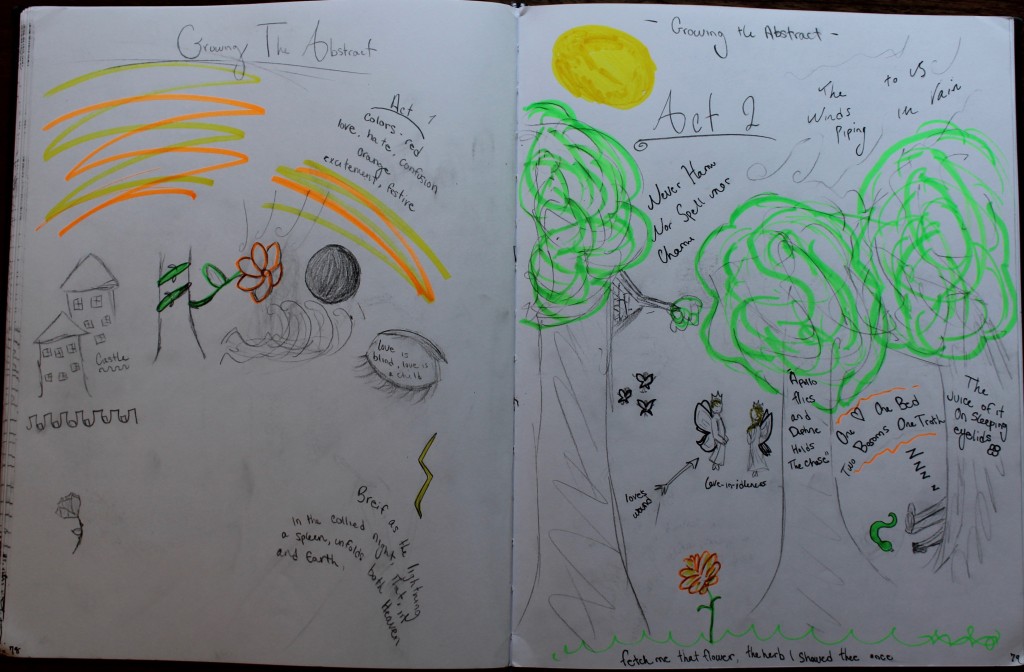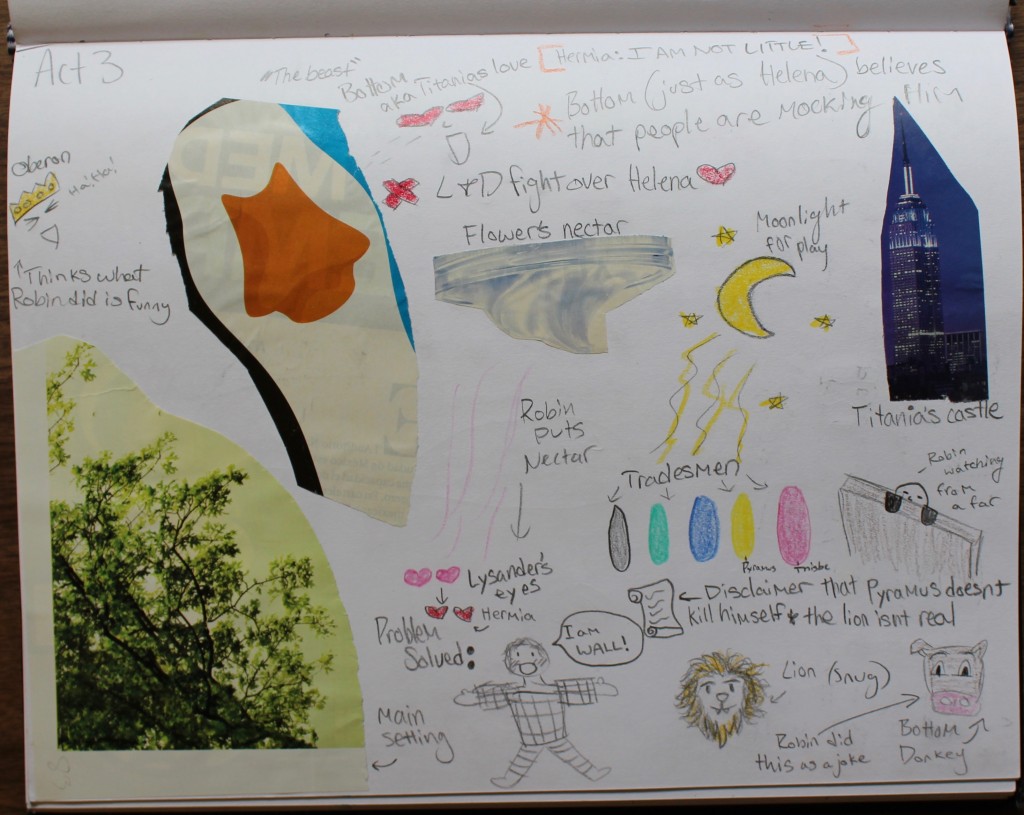Each year after we finish a book I recollect them. Each time I collect the books the students have to remove their annotations.
Usually when I collect The Odyssey from my 9th grade English class, I can see all their various vibrant sticky notes.
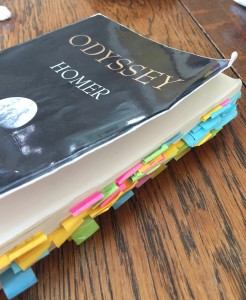
Last year as the class began removing their ‘reading work’ notes I knew then I wanted to do something more with the process. I took a few photos.
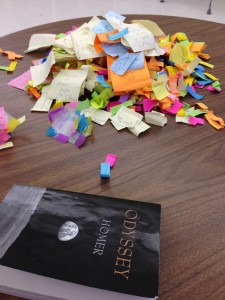
I was dissatisfied. So, I played around with the table, the light, the annotations, and asked the students for help: a collective visual of their reading experience. I liked the photo, but…

Still, I was sorry they were losing all this work. When we own and mark texts we also have a range of visual reminders. I have had students annotating texts for years, using a variety of methods, styles, structures, and designs. Marking a text, making a visual mark. Getting rid of the annotations seemed problematic. If reading is an ongoing experience where we never know how long a word, a phrase, a dialogue, a description will linger with us, could we find a way to have fuller reminders in class, for individual readers?
As the time approached this year to collect their books I kept wondering, Is there a way to re-view, to-regain, to create? Then, I thought: Why not use their journals? Why not make a visual of the visual? A story of the story? I then wrote the following assignment:
Homework for the Weekend.
I will collect your book on Monday. Over the weekend I would like for you to create a work of art using your sticky notes from your reading work. The work should be in your journal. The art should tell the story of your journey reading The Odyssey. You will need to use all your sticky notes. You may additionally draw, glue, and/or design. I will need to see specific details about your annotations in your work of art (the type, the book references, the purpose, etc). When I collect your books on Monday all sticky notes should be removed.
I wondered over the weekend how the assignment would be realized. I was very confident in them, but less confident in my idea. Was this too much?
On that Monday a few students shared their work and I quickly realized they had gone beyond anything I had imagined. On their own, without any additional instruction each student had continued the story of their reading. By shaping a visual mark of their reasoning and experience on the page they ‘made’ an argument about their reading experience. Sound familiar? Here’s a sampling:

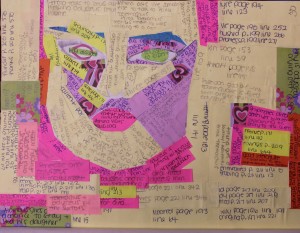
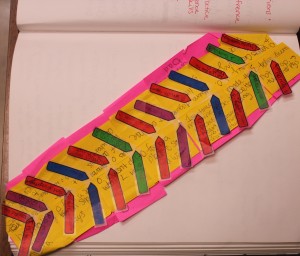
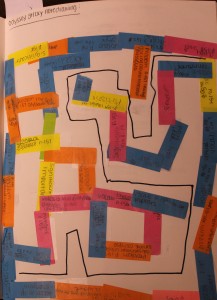
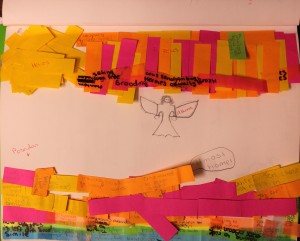
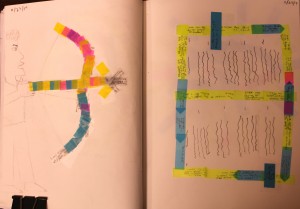
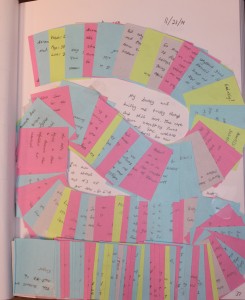
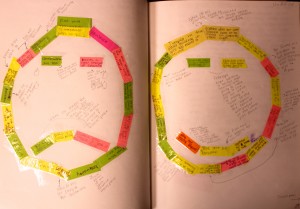
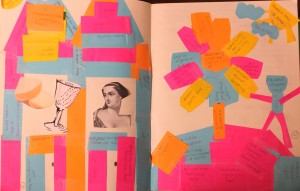
Students provided explantations of their argument, of their design methods and their aims. As seen above, many found ways to weave together the story of The Odyssey with the story of their reading process.
Reading as a boat, a maze, a tree, a change, a journey.
And like Odysseus their annotations found a place to rest, to live. They took the opportunity to abstract their reading work even further in remarkable ways. This story of the story teaches and delights– not only their audiences and themselves, but now also the world, our world.
–James Shivers
